Y-12 Blog
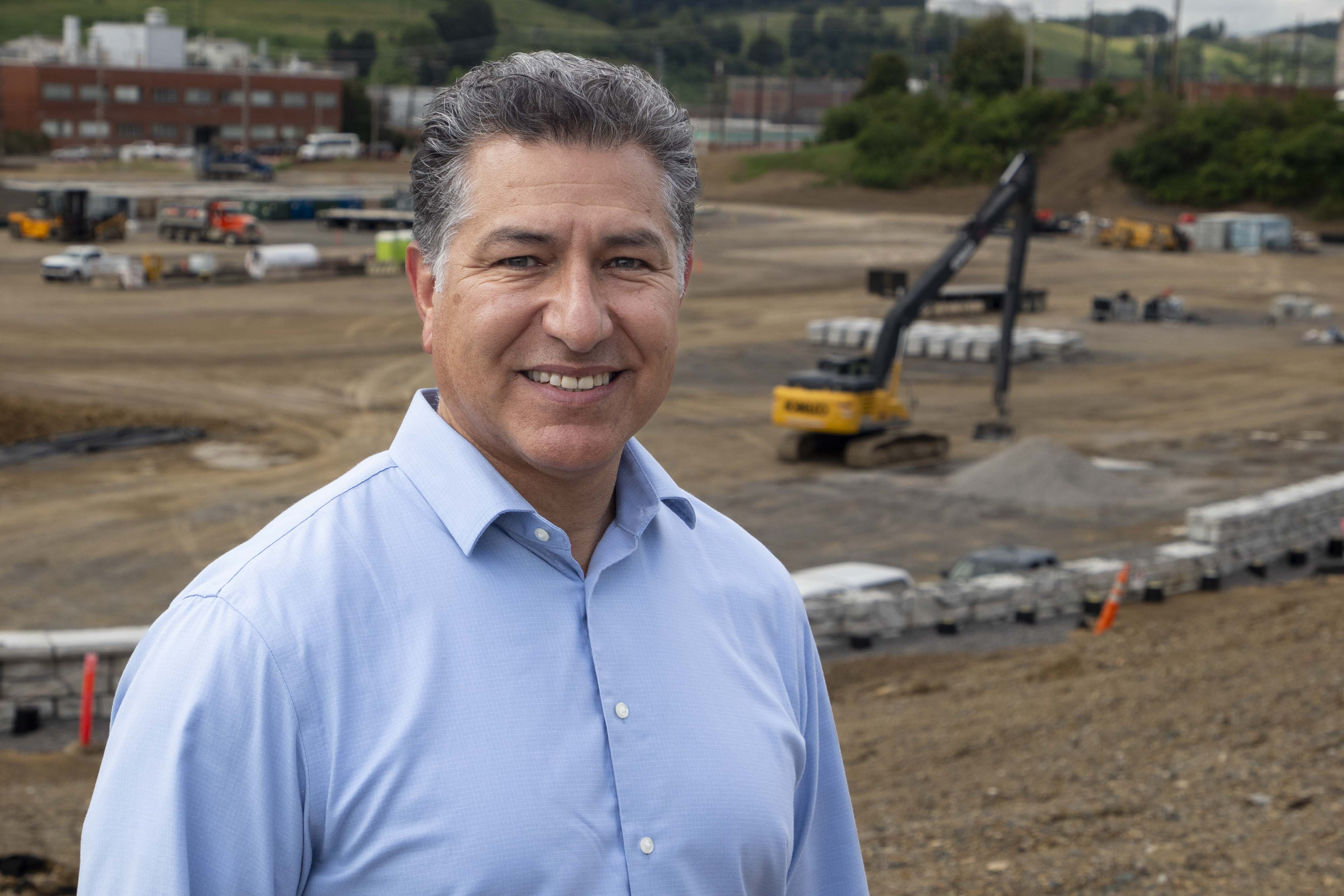
Take 5 minutes to learn about Sal Beltran, vice president of CNS Project Management. This article details his role and reinforces the diverse workplace culture CNS offers. Included in the questions is one related to a CNS performance element. All views and opinions are the employee’s own and do not necessarily reflect those of CNS.
Sal Beltran, vice president of CNS Project Management, finds himself back in the saddle in East Tennessee in more ways than one. He’s at the helm of Y‑12 Project Management in Oak Ridge during the week and in the seat of his Harley-Davidson in his spare time. At the same time, he’s leveraging time spent in the saddle out West to modernize Y‑12’s aging infrastructure.
Beltran’s first priority when he joined Y‑12 from Lawrence Livermore National Laboratory in February was to get up to speed on the massive portfolio of projects underway at Y‑12. His next was to schedule campfires across the site to reach the more than 400 people working with the Project Management organization.
“When my kids were younger, we would go horse camping in Washington, and we found the most dialogue happened when we’d sit around the campfire and talk,” he said. “Those conversations were relaxed; there were no expectations.”
Just as his family benefited from those relaxed, informal discussions, Beltran is hoping to bring the same approach to his Y‑12 family through the engagement sessions he calls “Campfires” with Project Management staff.
“It’s about connecting with the people delivering a project or operations,” he said. “Every time we have a campfire, I learn from the team, and the team learns what my priorities are. That’s the intent of the engagement sessions. You have to be able to say more than ‘I’ve been there, I’ve done that, this is how we’re going to do it.’ You have to be able to listen to the workforce there on the front lines, doing it every day.”
After graduating from Eastern Washington University, he was commissioned in the Army. Becoming an aviation officer, Beltran spent over a decade flying AH‑64 Apache helicopters before trading his flight suit for a business suit. He came to project management through roles in strategic planning, budget management, project controls, business applications, and construction with goals to deliver a tangible mission in mind.
“From my time in the military, I developed a deep sense of duty, country, mission,” he said. “After I left the military, I spent decades supporting the mission with DOE and NNSA. Working with NNSA is another way to deliver for our country and to not only deliver a project but also influence how we deliver it.”
Beltran’s career took him across the world and across the West, but he’s excited to find himself back with the Y‑12 family, where he had previously been a project manager for the Electrorefining project from 2018 to 2020.
“As a project manager at Y‑12, I had an opportunity to understand the incredible dedication and skill sets here,” he said. “Y‑12 is different than any other site in the NNSA complex. I see coming back to Y‑12 as an opportunity to deliver at another level. To come back — it’s exciting, not only because I’ve come back to CNS but because I get to enjoy Tennessee with my grandkids.”
What excites you about your new role?
What excites me the most is making a difference and contributing to the rich history of Y‑12. Our site is at a point where it needs immediate project delivery to enhance needed capacity and capabilities. We’re looking at how to streamline projects and requirements so we can deliver to the hands of our operators faster. Providing capacity and capability to enable our operators to deliver mission is crucial, especially in today’s geopolitical climate.
What is the top lesson you have learned in applying problem‑solving skills to an issue?
Problem‑solving is key in every element of executing projects. If everything worked to plan, we would push a “start” button and the project would be done. In the real world, project teams face changing conditions every day. A project team adds value to mission delivery by approaching adversity head-on and problem‑solving as challenges arise. Problem‑solving, communication, and ultimately, empowerment in the face of adversity epitomizes the one‑team approach.
What is a one‑team approach?
For me, a one‑team approach involves all members of the team having a clear understanding of project objectives and need dates, holding each other accountable and being empowered to coordinate with stakeholders to drive results. Project teams are comprised of many organizations and functions, and they must all work together as “One Team” to be successful. Fostering this mindset will be a great predictor of mission success.
Why is it important that we hold ourselves accountable in our daily tasks?
Our site’s work is critical to the nation and to the world, so meeting our commitments is imperative. We must be accountable to each other to complete our portion of the mission. Every individual on a team must be empowered to seek solutions and alternative paths to accomplish the mission. Our success is never just about delivering a project. It’s about aligning with our customers’ vision and helping them achieve long‑term goals.
What’s your favorite outside of work activity and why?
I enjoy riding my motorcycle, and I’m looking forward to reacquainting myself with the Smoky Mountains and exploring all the beauty of Tennessee. On a nice day, getting out on a little two‑lane, winding road — my wife and I just go out and enjoy the beautiful countryside.
So … what I hear you saying is that you’re going be taking on the Tail of the Dragon?
I already have.

Beltran is especially excited to spend time with his grandkids, who toured the Y‑12 site on May 3 along with many other Y‑12 families who rode tour buses during Y‑12 Family Day 2025.
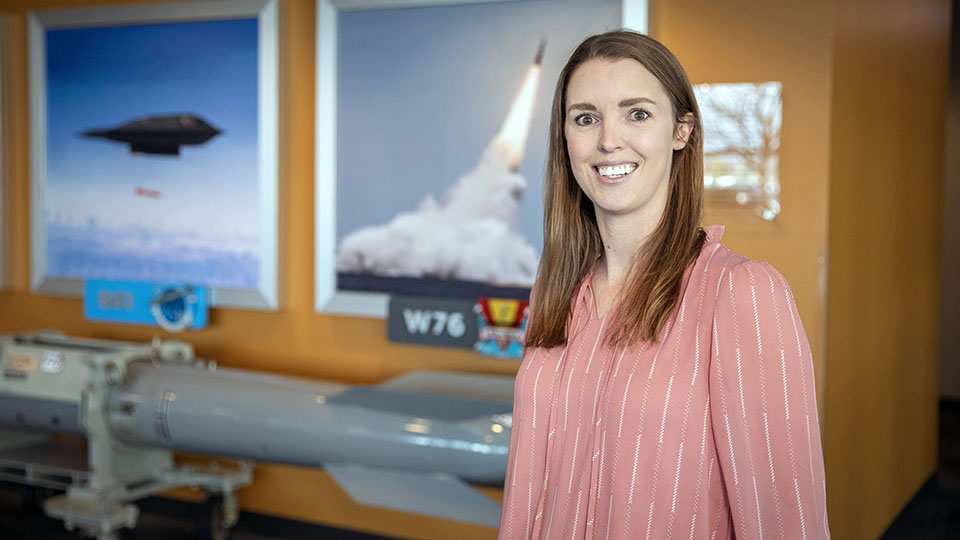
Julie Cramer started at Y‑12 in 2010 as an intern and has held several positions at the site during her career. (Photo by Jordan Ray.)
The Y‑12er Spotlight shines on one of our own. It takes all Y‑12 employees to make the mission happen successfully and safely. All views and opinions are the employee’s own and do not necessarily reflect those of CNS.
For Julie Cramer, it’s important that things go according to schedule at Y‑12. That’s because it’s important for our mission that things go according to schedule.
Cramer is the Site Scheduling director, a recently established position within Site Operations. The Site Scheduling organization focuses on integrated scheduling and helps provide the site with a single scheduling process.
“The goal is to have everyone playing to one sheet of music, so everyone knows what’s happening at the same time,” she said. “We’re taking these different schedules that people work to and making them talk to each other, so there are no conflicts. This will help everything be done effectively and efficiently, so we can better meet the deliverables and achieve the mission.”
Schedule integration is not a novel idea at the site; it has long been a goal.
“This is not a new thing,” Cramer said. “Y‑12 has been working on this for some time. It’s not going to happen overnight. It will take a while to get it seamless and working well. Ultimately, we want the scheduling to be more proactive than reactive.”
She started at Y‑12 in June 2010 as an intern, when she was a senior at the University of Tennessee, Knoxville, where she earned a bachelor’s degree in mechanical engineering and later a master’s degree in industrial engineering, with a concentration in engineering management from UT.
In her 15 years at Y‑12, Cramer has been senior manager of Safety and Industrial Hygiene (S&IH), an Environment, Safety, and Health advisor, an Operations Health production project lead, and a Lean Six Sigma Black Belt, in addition to performing multiple functions within Y‑12 Engineering.
What has impressed Julie during her tenure is “the breadth of the scope at Y‑12,” she said. “S&IH supports everything that happens here, and that really opened my eyes. Also, the number of folks it takes to make Y‑12 successful, to make the place operate and support the mission.”
Not only does the quantity of people stand out for her, but their qualities do as well.
“It’s great how people are willing to jump in and help here,” she said, “They have this go‑getter attitude to complete the mission, and they jump over a lot of hurdles in the process. It’s also the relationships with people and how much they mean to you and help you along the way.”
Are you doing what you envisioned as a young adult? If so, describe how you got here.
I knew I wanted to be an engineer. I worked as an engineer, but my career has taken some zigs and zags. Each one has given me opportunities to see different aspects of Y‑12 and helped me grow my career in a way I couldn’t envision.
What CNS principle drives you to be successful?
Set high standards. If we each hold ourselves accountable and set high standards, that sets us up for success. It creates that drive for excellence, to be better every day.
What work advice would you offer someone who is new to Y‑12?
Experience as many things as you can. Don’t hesitate to say yes to an opportunity. You don’t know where it may take you. If you do these things, you will go far.
What’s your favorite outside‑of‑work activity and why?
I love to travel. We try to visit several new places each year. In early 2023, we went to Costa Rica. It was the kids’ first time out of the country (she and her husband have a 5‑ and 8‑year‑old). I’ve been to Mexico, various countries in the Caribbean, the United Kingdom, and many places in the U.S. We have plans to go to Portugal and Spain next year. I really enjoy experiencing the different cultures, the food, and the activities.
What characteristics define a good leader to you?
The biggest one is servant leadership. Servant leadership is about fostering a culture of trust, collaboration, and growth with your team. You have to be willing to engage with and support your people, ensuring that they feel valued and respected. You must also build the sense of shared purpose to support our mission.
A key principle at Y‑12 is continuous improvement — one of 11 principles that reflect the site’s commitment to being a learning organization. Twice a year, the Performance Improvement group asks Y‑12 organizations to submit projects to be included in its “Continuous Improvement Celebration.” There, each team shares its successes, and employees vote for the Best Y‑12 Initiative and Best Value Stream Element Teams Initiative.
This year’s recent celebration included 14 projects — 10 Y‑12 initiatives and 4 VSET initiatives.
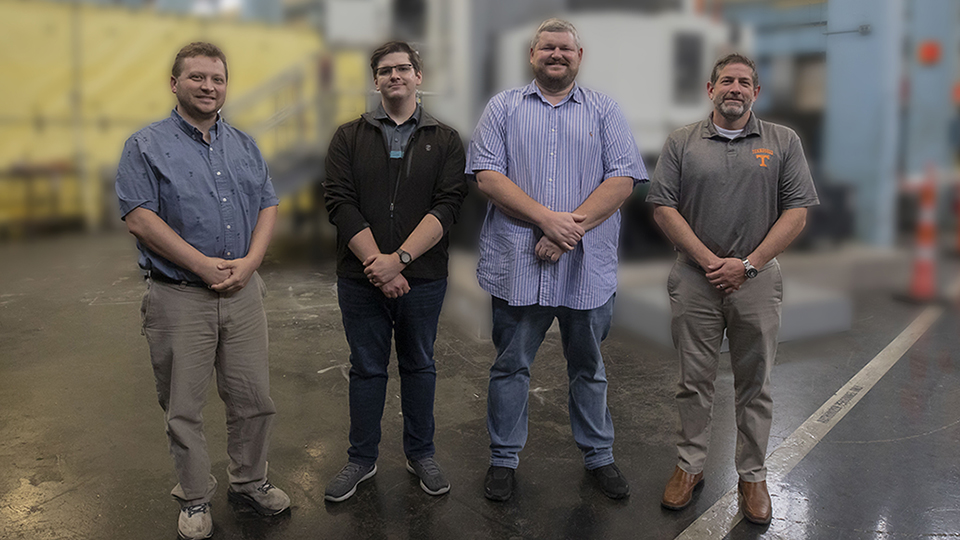
The Tooling Project Team pictured standing in front of a machine on the shop floor.
The Best Y‑12 Initiative: The Tooling Project Team
The Tooling Project Team, comprised of Jeremy P., Adam F., Brian F., and Bill T., worked proactively to identify and mitigate problems with the tooling production system, which supports the Master Production Schedule. The Master Production Schedule is based on demand from Y‑12’s external customers and is used to align shop floor schedules across all production facilities on‑site, allowing major production deliverables to be met on time.
The group noticed that there were challenges concerning data integrity, priority management and integration, and communication between stakeholders. These challenges had been preventing Y‑12 from reliably aligning the shop floor schedule with the master schedule. As a result, the site faced a risk of production delays due to tooling not being delivered on time.
The team acknowledged these challenges and standardized schedule priority integration for tooling orders. To further monitor and improve their capacity for tooling movement, they created a visual dashboard to communicate scope and schedule data to all stakeholders and created a system of metrics and key performance indicators for the tooling production system.
The results of their work brought 15% fewer hours spent in tooling manufacturing labor despite an 82% increase in volume of tooling produced compared to the prior fiscal year. Other benefits included:
- A $44.7M return on investment as a result of increased manufacturing throughput
- A reduction of risk to program schedules, specifically risk regarding tooling readiness
- A compilation of current and historical data and metrics to be used for tracking, analytics, forecasting, and estimates
The team’s new tooling scheduling has enabled General Manufacturing to be integrated into the master schedule of site deliverables for the first time.
“This project provided a lesson learned moving forward,” Adam, a recent graduate from the Y‑12 — University of Tennessee Master’s Cohort program for Systems Engineering, said. “We can now prioritize the consistent flow of information and shared understanding of priority, enabling the shop floor to focus on fulfillment of orders and reduce disruptions in product flow.”
Adam also presented the project as his capstone project in the UT program.
“It was a great experience to apply the material from my coursework to the project,” Adam said. “The human factor — focused approach to systems engineering is something I will continue to use in my career from now on. I am proud to contribute to the mission, and I feel obliged to do whatever I can within my influence to improve our ability as a site to do so.”
Team member Jeremy said, “I view continuous improvement as paramount to our mission because each year, we are asked to do more and more as a site. If we do not make changes, we will be unable to keep up with demand in the coming years.”
The Best VSET Initiative Winner: Beta 2 Operators Reorganization Team
Marcus M. and his team “saw a need and took initiative” and was named the Best VSET Initiative across the site.
The team identified a problem with the organization of their supply room. Due to the room often being unorganized, it was difficult for employees to find consumables in a timely manner and know when to place reorders.
“I think it’s great that our team was a winner,” Marcus said. “A lot of hours went into making this storage room what it is today, and I couldn’t have done it without the help of many operators. At one point, there were over 20 people who helped with this project.”
|
1. Sort 2. Set in order 3. Shine 4. Standardize 5. Sustain |
Marcus and the team used 5S, a methodology that results in a workplace that is well organized, free of unneeded items, safe, and conducive to high quality outputs. The reorganization team sorted and disposed of unneeded items, set in order every item that is needed in a way that supports operations, and implemented a Kanban system to sustain the progress made. A Kanban system is an inventory control system that uses visual cues, like cards, to manage production and indicate when more supplies need to be ordered.
“Our team learned the value of Y‑12’s Clean Sweep program and the importance of visual management,” Marcus said. “These two tools allowed us to dispose of unneeded items and learn a new system that leads to operators actually taking pride in this room now.”
This team’s efforts saved 73 hours annually spent on looking for consumables.
“You know you started something great when people want to become involved, and that’s great,” Marcus said. “Operators have taken initiative to help improve and finish up certain jobs to ensure that the room stays organized. Continuous improvement allows workers on the frontline to have a say in how their work atmosphere is maintained. It inspires growth, and growth is good.”
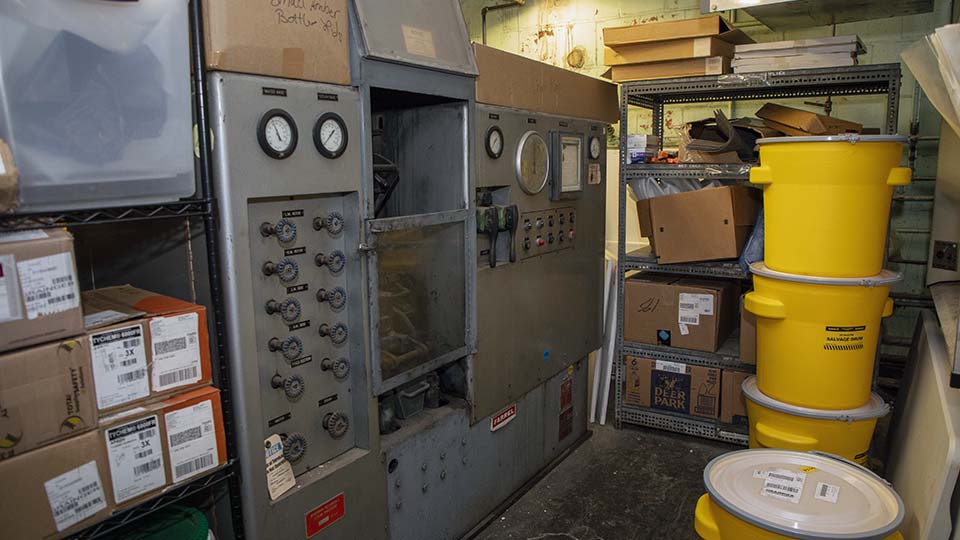
The unorganized supply room before the team of operators took the initiative to make it more efficient.

During her Y‑12 tenure, Heather Harrison has held a variety of roles, all that prepared her for her current role as Nuclear Engineering director. Photo by Matthew Hawkins.
The Y‑12er Spotlight shines on one of our own. It takes all Y‑12 employees to make the mission happen successfully and safely. All views and opinions are the employee’s own and do not necessarily reflect those of CNS.
When Heather H. graduated with a degree in industrial engineering from the University of Tennessee in 2002, she had plans to take a job at a meat packaging company.
She changed her plans when she heard about the work being done at Y‑12.
“I didn’t know a lot about Y‑12 until a good friend of mine shared about it,” she said. “The mission intrigued me. I learned more and was even more interested after that.”
Heather joined the Y‑12 team in a time of tumult; the site was heavily recruiting as many in the workforce were approaching retirement, while also following heightened security guidelines after the 9/11 attacks the year before. At the time, 50$ of Y‑12’s workforce was eligible to retire, and some clearances were taking 2 years to process — Heather’s included.
Since then, she has worked in a variety of positions across the site, whether as a technical advisor, a project lead, or now as Nuclear Engineering director. She currently oversees Nuclear Criticality Safety, Packaging Engineering, and Fire Protection Engineering.
“Over the years, I’ve had so many great managers and mentors that shared information and gave me opportunities to grow,” she said. “Now I’m here at 23 years of company service and it’s my turn to pay it forward.”
One way that she is paying it forward is through a focus on encouraging and building confidence within her employees. With the recent reorganization of Nuclear Engineering, Heather has taken the opportunity to bring her team through continuous improvement training.
“I want people to learn the framework, learn how to make decisions, and know their authority to make those decisions,” she said. “I encourage setting healthy boundaries and let people make decisions within their ability.”
When making decisions, Heather has a simple goal:
“I focus on continuous improvement,” she said. “Decide on a solution and gather data. It’s alright if your decision was the wrong one; the key is to keep improving. Sometimes we get bogged down with worries over whether we’re making the wrong decision, when we need to make the decision to improve regardless.”
What is your favorite aspect about your work environment?
The people. I have the opportunity to work with very talented individuals and enjoy working with this team to overcome obstacles and support the mission.
What CNS principle drives you to be successful?
Operational Excellence. As an industrial engineer, I’m a firm believer in continuous improvement, data‑driven decision making, and customer focus. I also believe alignment with the business strategy and employee empowerment are keys to being successful.
What work advice would you offer someone who is new to Y‑12?
Be willing to accept a challenge and step out of your comfort zone. I’ve had some really great opportunities over my years at Y‑12 because someone saw potential in me, even if I didn’t see it yet.
What is something you are looking forward to doing in your role?
I am a new director for Nuclear Engineering, and we are completing a reorganizing strategy. We are establishing several new positions like direct charge supervisors in Nuclear Criticality Safety. I look forward to watching these individuals establish themselves and grow as leaders. It’s exciting for me to watch these individuals enter these new roles.
What advice would you offer a newer employee about the importance of solving problems and asking questions?
It’s important to understand what you know, what you do not know, and what the requirements are surrounding the problem you need to address. This helps you to better understand your gaps and when you may need additional help in addressing your problem. There are a lot of requirements that cover our scopes of work, and it’s important to ensure that all the right questions have been asked. Failure to ask an important question can lead to a major issue in one of our nuclear facilities.
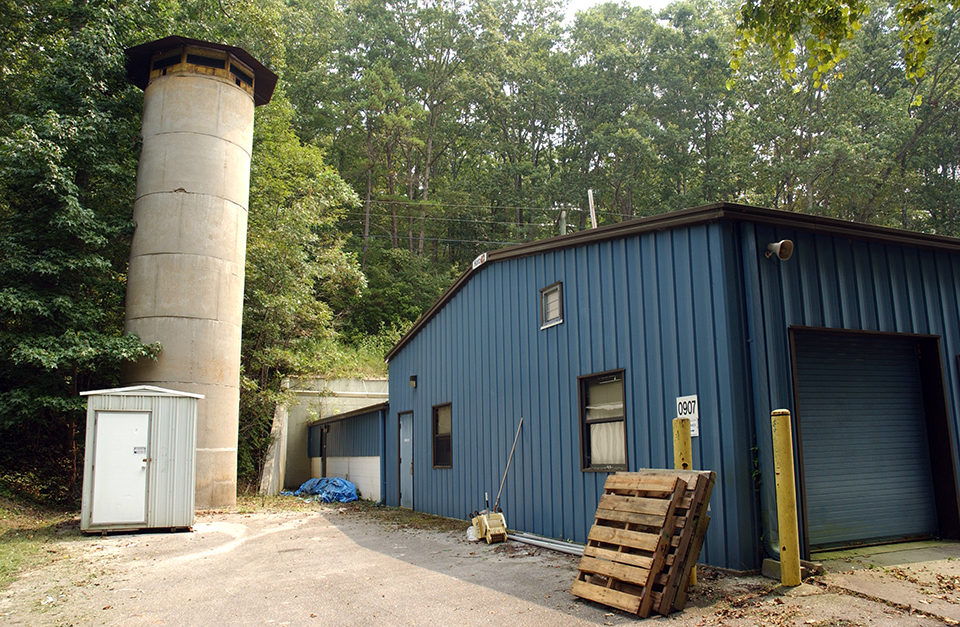
Installation Dog was a Y‑12 uranium storage facility from May 1948 to May 1949 that was disguised as a silo (shown above) and a barn. The area later became known as Katy’s Kitchen and now is part of the Oak Ridge National Laboratory.
In the article below, writer Amy A. shares details about working on a 2004 Y‑12 cookbook.
As a Y‑12 employee, I’ve experienced a number of blessings in my 30‑plus years, but one of the most memorable happened in 2004 while working on Katy’s Kitchen: Y‑12 Secret Recipes. This cookbook was funded by Y‑12’s managing and operating contractor with proceeds going to Y‑12’s United Way Campaign.
The title for the cookbook came from a former Y‑12 storage facility used from May 1948 to May 1949. First known by the code name “Installation Dog,” and designated as Building 9214, the original purpose of the facility, which was located on the Oak Ridge National Laboratory (ORNL) site, was to house enriched uranium after World War II.
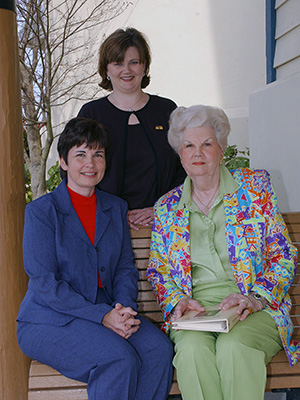
Y‑12ers Elaine W. (left) and Amy A. (center) met Kathryn Odom Howard in April 2005 to share the Katy’s Kitchen: Y‑12 Secret Recipes cookbook.
History buffs Mick Wiest and Ray Smith, both Y‑12 employees at the time, had shared with me how the secure building came to be built by Luther Agee. According to the historians, Agee never knew how or why he was chosen to design the structure, but he was told Installation Dog would be a secure building and would store bomb‑grade uranium. When built, Installation Dog was disguised as a barn and silo to camouflage it in East Tennessee’s rural farming landscape. Before completion of Installation Dog, Building 9213, an uncamouflaged facility located on the Y‑12 site, was used for storing the uranium.
In my research, I learned how Installation Dog was renamed Katy’s Kitchen after Kathryn Odom Howard in the late 1950s. During Howard’s time at X‑10 (what ORNL was referred to then), the three Oak Ridge sites (K‑25, X‑10, and Y‑12) were under one contractor. Her organization, Analytical Chemistry, was located there, and Howard often had lunch there. The group decided to nickname the facility “Katy’s Kitchen,” and the name stuck.
Working on the cookbook gave me a behind‑the‑scenes look at Y‑12’s history, offered the opportunity to work with a great crew of people, and allowed me to meet the namesake of Katy’s Kitchen.
After the cookbook was published in 2004, someone connected me with “Miss Katy.” Wiest (who worked with Y‑12 Environment, Safety, and Health then) took Miss Katy on a tour of her old work location.
“It looks so different. It brings back memories … some very good ones,” she said in an interview after the tour. Wiest coordinated the tour with an ORNL employee who said he was glad to meet the namesake of his workplace and told Miss Katy, “I thought you were a myth!” (Before coming to Y‑12, I worked at ORNL for 10 years and had never heard of Katy’s Kitchen.) Miss Katy became a friend to me and attended my wedding in 2006.
While Miss Katy didn’t have a direct Y‑12 tie, she indirectly did through the renaming of a facility. In mid‑April, I found out her great, great nephew, Griffin W., works at Y‑12. He shared his aunt passed away earlier in the month and knew Miss Katy had many ties to the Oak Ridge Reservation.
Witt said, “Even at 100 years old, she would sit with me and tell me stories for hours about working out there and how much it meant to her that I too was working in Oak Ridge — supporting the mission as she once did.”

Mick Wiest and Kathryn Odom Howard visit Katy’s Kitchen in August 2005.
Little did I know when I took on a United Way Campaign project I would experience Y‑12 history with three greats, Wiest (who passed away in 2024), Smith, and Howard.
As Smith said to me in 2004, “We can be proud of the heritage of our Y‑12 history and one of the many interesting stories associated with structures that were part of the tremendous Manhattan Project that helped win both World War II and the Cold War!”
